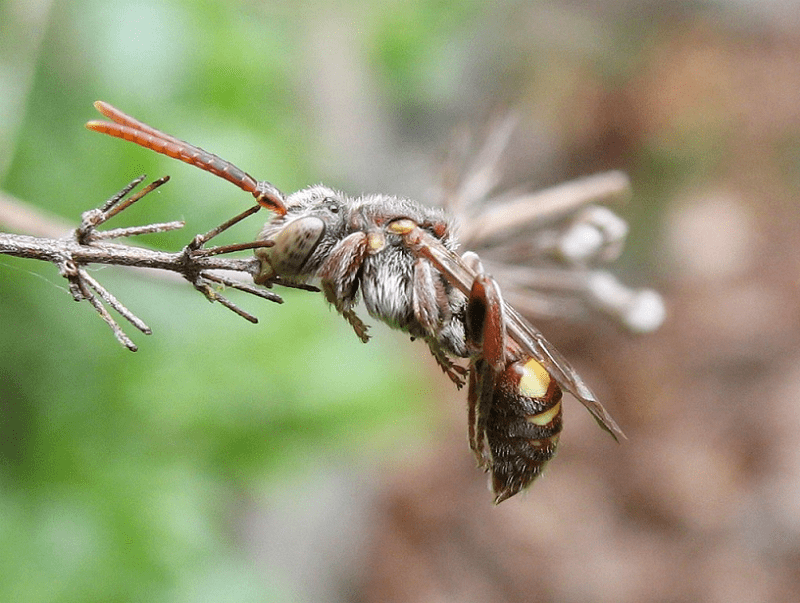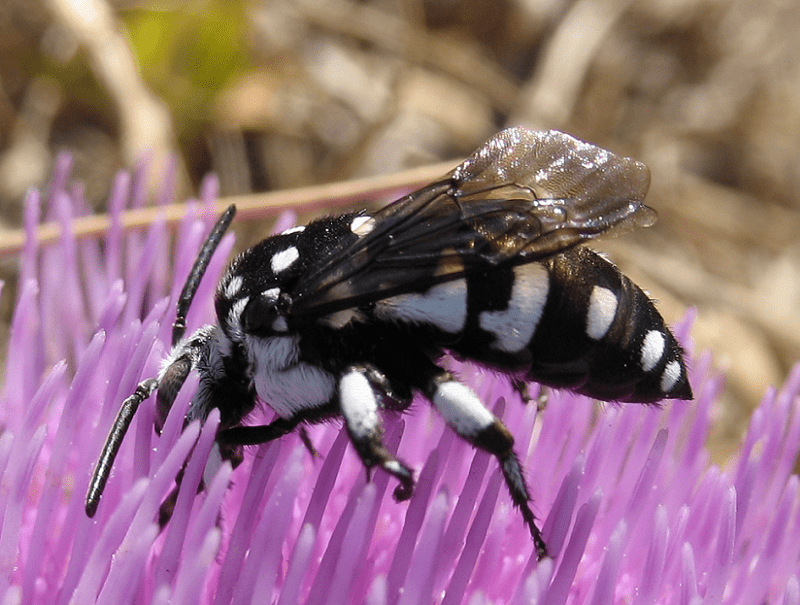
Cuckoo Bee Facts
- Perhaps most notably, the term Cuckoo Bee serves as the name collectively used to refer to any of large variety of bees. More specifically, though, the somewhat interesting term refers to those bee species that have developed a highly fascinating pattern. That pattern is the astonishing practice of actually laying their eggs within the nests of other species of bees.
- In a fascinating coincidence of Nature, the practice of these insects remains reminiscent of that of a equally remarkable type of avian. That’s because the cuckoo bird, which serves as the source of the name, employs much the same strategy. If you are interested in learning more, you can actually read more of this behavioral pattern in our post on Cuckoo Wasp.
- In addition, this particular invertebrate also appears to be comparatively quite clever. That holds true due to the fact that, after leaving the nest of other bees, the Cuckoo Bee will often push debris over the opening. Most often, this consists of such things as dirt, debris, leaves, and twigs. This camouflaging action further serves to help conceal its intrusion into the nest.
Related Articles
Sweat Bee Perdita Minima Carpenter Bee

Cuckoo Bee Physical Description
Given that a great many species fit under the umbrella term of Cuckoo Bee, physical variations between them obviously exist. In fact, some of these differences in appearance can be quite significant. Nevertheless, all of the species do share a few physical characteristics. One characteristic that remains standard to them all remains the physiological trait of sexual dimorphism.
Furthermore, the females can be easily distinguished from the males. This occurs because this gender of the Cuckoo Bee does not possess the scopa necessary for collecting pollen. In most species of this insect, the females also have less body hair and a thicker exoskeleton. Finally, while not true of all varieties, the majority display bright colors, including brilliant shades of green, red, and blue.
- Kingdom: Animalia
- Phylum: Arthropoda
- Class: Insecta
- Order: Hymenoptera
- Family: Halictidae
- Genus: Sphecodes

Photographer: Harald Hoyer
CC License: https://bit.ly/1jxQJMa
Cuckoo Bee Distribution, Habitat, and Ecology
Just as with physical differences, since the term Cuckoo Bee applies to so many species, physical locations vary significantly as well. Nonetheless, all known members of this genus inhabit the temperate and tropical regions of the earth. More precisely, the majority of the various varieties inhabit the continents of Europe, North America, and Australia. Very few types exist outside of these regions.
The stunning insects display a remarkable behavioral pattern known to entomologists as kleptoparasitism. Typically, the arthropod will enter the nest of a physically similar pollen-collecting species. Then it will lay its eggs within chambers already prepared by bees of the host colony. When the larva of the invading species hatches, it quickly consumes the pollen ball deposited by bees of the host hive.
At this time, if the female did not do so previously, the newly hatched Cuckoo Bee will also consume the larva of the host colony. In some species, the female will even kill the queen of the host colony and take her place. Those species which display this behavior are most commonly known as social parasites. However, another term sometimes used for such creatures is brood parasites.
Species Sharing Its Range
Tansy Beetle Grizzly Bear Bandicoot
Check out our other articles on Earth’s Many Stunning Waterfalls, Carolina Hammerhead Shark, Enchanted Well, Chilean Firebush, Arctic Tern, Tasmanian Giant Freshwater Crayfish















Leave a Reply